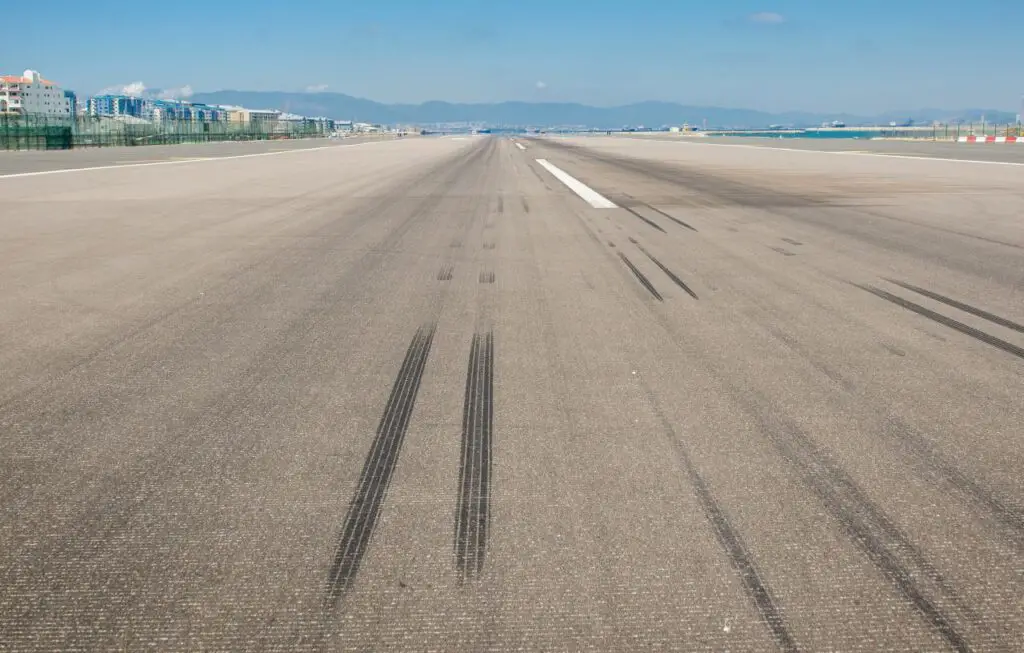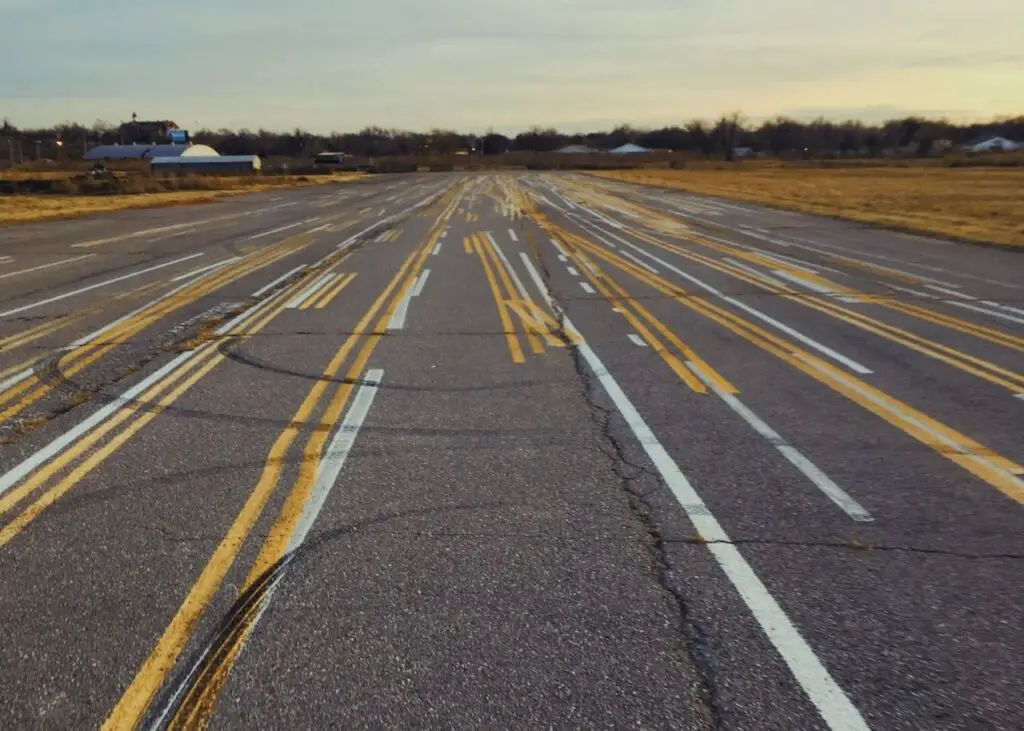Tire marks on concrete surfaces can be frustrating, leaving driveways and garage floors worn and dirty.
From routine parking to hot tyres, these dark stains can accumulate quickly and are often tough to remove.
Fortunately, with the right tools, cleaning solutions, and techniques, even stubborn tyre marks can be lifted, restoring your concrete's clean, polished look.
This guide breaks down effective steps and alternative methods for thoroughly removing tyre marks to maintain a fresh, tire-mark-free surface year-round.
Whether using household items or opting for professional-grade products, you’ll find the best approach here for tackling tyre stains and preventing them from marring your concrete in the future.
Let's get straight to the point
With the right tools and cleaning techniques, removing tyre marks from concrete can be simple.
Start by preparing the area, applying a concrete-safe degreaser, and scrubbing with a stiff broom. For stubborn stains, consider industrial degreasers or hot-water pressure washing.
Alternatives like cat litter absorption can also work over time. After cleaning, apply a concrete sealant to protect against future marks, and remember to cool the tyres before parking to reduce staining.
For tough cases, professional pressure washing services offer effective, long-lasting results. Regular maintenance helps keep concrete looking fresh and clean year-round.
Essential Tools And Materials Needed
To remove tyre marks effectively, gather the following tools and cleaning agents:
- Concrete Degreaser: Use a concrete-safe degreaser specifically formulated to tackle rubber and oil stains effectively.
- Bristle Broom: A stiff broom or scrub brush provides the necessary scrubbing power for deeper, embedded stains.
- Pressure Washer: For stubborn marks, a pressure washer is invaluable.
- Protective Gear: Wear safety glasses, gloves, and waterproof boots for protection during the cleaning process.
Tip: If you don't own a high-pressure washer, consider renting one from a local hardware store. It can be highly effective in removing deep tyre marks from concrete.
Step-By-Step Guide To Removing Tyre Marks From Concrete

Step 1: Prepare The Area
Before starting, ensure the area is clear and safe to work in.
- Sweep Away Dirt and Debris: Begin by sweeping the surface to remove any dirt, leaves, or debris that could interfere with cleaning.
- Cover Nearby Plants and Objects: Protect any nearby plants, pots, or other items that may be damaged by cleaning solutions or water.
- Wear Protective Gear: Always wear safety glasses, gloves, and waterproof boots to safeguard against any splashes.
Step 2: Apply Degreaser To The Tire Marks
Choose a concrete-safe degreaser to break down rubber compounds effectively.
- Pour Degreaser: Pour degreaser directly onto the tyre marks, covering the entire stained area.
- Let it Sit: Allow the degreaser to sit on the tyre marks for 20-30 minutes, adding more if it begins to dry out.
- Work in Cooler Conditions: To prevent rapid evaporation, apply the degreaser during cooler hours of the day for the best results.
Step 3: Scrub With A Stiff Bristle Broom
Once the degreaser has had time to settle, scrub the area thoroughly.
- Use a Stiff Broom or Straw Brush: This helps work the degreaser deeper into the concrete surface to break down the rubber.
- Apply Firm Pressure: Use even, firm strokes, focusing on areas with visible scuffing.
- Optional Machine Scrubber: For larger areas, consider using a floor scrubber or buffing machine with a compatible scrubbing pad for added efficiency.
Step 4: Reapply Degreaser If Necessary
If some marks remain after the first scrub, reapply the degreaser for a second treatment.
- Reapply Degreaser: Pour a second layer of degreaser over any remaining marks.
- Scrub Again: Scrub once more to remove residual rubber from the concrete surface.
Alternative Methods For Stubborn Tire Marks
If the above steps don’t fully remove the tyre marks, try these additional methods:
Method 1: Use An Industrial Degreaser
Industrial-strength degreasers can be effective for stubborn tyre stains on concrete.
- Apply Industrial Degreaser: Available at hardware stores, apply according to the product’s directions.
- Allow to Sit for 10-15 Minutes: This gives the degreaser time to penetrate deep-set stains.
- Scrub and Rinse: Use a stiff brush to scrub, then rinse thoroughly with water.
Method 2: High-Temperature Pressure Washing
Hot water pressure washing provides a powerful solution for tough stains.
- Use a Pressure Washer with Hot Water: Set the pressure washer to at least 3000 psi for maximum impact.
- Spray for 2-3 Minutes: Focus the spray on the tyre marks, moving the nozzle constantly to avoid surface damage.
- Rinse Away Residue: Rinse thoroughly to remove all degreaser residue.
Method 3: Cat Litter Absorption Method
Cat litter can help absorb tyre marks over time.
- Sprinkle Cat Litter Over Marks: Leave the cat litter in place for 5-7 days to absorb oils and compounds.
- Sweep Away and Check Results: After a week, sweep away the litter and inspect the area for any remaining marks.
Post-Cleaning Tips And Maintenance
After successfully removing the tyre marks, follow these steps to maintain a clean and protected concrete surface:
1. Clean Up Surrounding Areas
Clean any surrounding areas to avoid leaving residues or streaks.
- Rinse Adjacent Surfaces: Water removes stray degreaser or tyre residue from nearby surfaces.
- Remove Tarps and Covers: Carefully remove any protective coverings, ensuring that plants and items remain safe from lingering chemicals.
2. Squeegee The Concrete Surface
After cleaning, use a squeegee to remove excess water.
- Squeegee in One Direction: Push water toward the edges for quicker drying.
- Allow to Air Dry: Let the area dry completely before parking on it again.
3. Sealing The Concrete To Prevent Future Tire Marks
Applying a concrete sealant after cleaning can help reduce the appearance of future tyre marks.
- Choose a Penetrating Sealant: Opt for a high-quality penetrating sealant designed for concrete driveways.
- Apply with a Spray Bottle: Spray the sealant evenly across the surface in small sections for thorough coverage.
- Spread with a Clean Broom: Evenly distribute the sealant evenly using a broom.
- Allow to Dry for 24 Hours: Let the sealant cure fully before resuming parking.
Preventing Tire Marks On Concrete Surfaces

Preventing tyre marks is often easier than removing them. Here are tips to minimise marks on your driveway or garage floor:
- Use Quality Sealants: A good sealant protects against tyre marks and staining.
- Allow tyres to Cool Before Parking: Avoid parking hot tyres directly on concrete.
- Regularly Clean Concrete Surfaces: Frequent cleaning prevents tyre marks from setting in.
- Use Low-Polymer tyres: Tyres with lower polymer compounds leave fewer marks on concrete.
Hiring A Professional Pressure Washing Service
If DIY methods aren’t enough, consider hiring a professional service to handle tough tyre marks. Here’s what to look for:
- Request References and Reviews: Check the service’s reputation by requesting references and reviewing customer feedback.
- Before and After Photos: Reputable services often showcase their work through before and after photos.
- Insurance Verification: Ensure the company has insurance for your protection.
- Eco-Friendly Solutions: Make sure they use concrete-safe, environmentally friendly cleaning solutions.
- Inspect the Results: After the service, inspect the driveway to ensure it meets your standards.
Conclusion
Removing tyre marks from concrete can be simple when you have the right tools and cleaning solutions.
Following the step-by-step guide, you can lift even the most stubborn stains from your driveway or garage floor, restoring its clean, polished look.
Effective methods are available for every situation and stain type, whether you opt for a household cleaner, a concrete-safe degreaser, or a high-temperature pressure wash.
By taking simple preventative measures—such as applying a quality sealant, cleaning regularly, and being mindful of tire temperature—you can protect your concrete from future marks, keeping it looking fresh and well-maintained.
If DIY approaches prove challenging, don’t hesitate to hire a professional who can deliver long-lasting, spotless results safely and efficiently.
FAQs About Tyre
Proper and regular cleaning of your concrete driveway will help prevent the buildup that makes tyre marks more stubborn and harder to clean. When applying tyre shine, always cover the area you’re working on with some pieces of old fabric to protect your driveway.
Some driveways are more prone to tire marks and tire shine marks because of the type of sealer that has been used. The rubber on your tires interacts with sealers differently.
For example, an acrylic sealer has a low level of cross-linking, which means it will react strongly with rubber at leave more obvious marks. Resealing your driveway with a polyurethane or epoxy sealer could help prevent future tyre marks. Reapplying sealer at least every two years will keep your driveway looking its best.
We’re sorry, but these marks aren’t going anywhere fast on their own. Many of the chemicals used in tyre compounds are water-resistant, so they won’t gradually fade in the rain. Instead, they generally stay around for months or even longer.
This is good news for accident investigators, who can piece together evidence by looking at the position and type of tyre marks. However, it’s less good for the rest of us, as we don’t want unsightly dark marks on our clean driveways.
So, we have two main approaches here. First, we learn the best ways to prevent these marks from happening and how to remove them if they occur. Then, of course, if it’s a small mark on a dark-coloured or older driveway, we may decide not to worry about this at all.
As tire marks won’t go away on their own, you’ll have to remove them yourself. However, it’s a pretty straightforward process, and we’ll take you through how to do it.
You have a choice of three types of cleaning products: degreaser, oxygen bleach or trisodium phosphate. This last one is a heavy-duty degreaser that’s similar to the bicarbonate of soda.
Bleach may sound harsh, but gentler remedies might not remove those black marks. Don’t use bleach if you have a stained or painted driveway, and please be careful with the run-off when you rinse it later. You don’t want to harm plants, grass, or pets.
You can buy degreasers online or in-home stores. This is a more environmentally friendly method than diluted bleach, but you may need to repeat the process. If it’s a big stain, don’t mess about degreasing it with a mild domestic soap, but get yourself a big bottle of trisodium phosphate.
The method we’re about to take you through works on asphalt, concrete, stone, and brick driveways. Ideally, clean the stain as soon as you notice the tire marks, as they’re harder to remove once they’ve baked in for a while.

